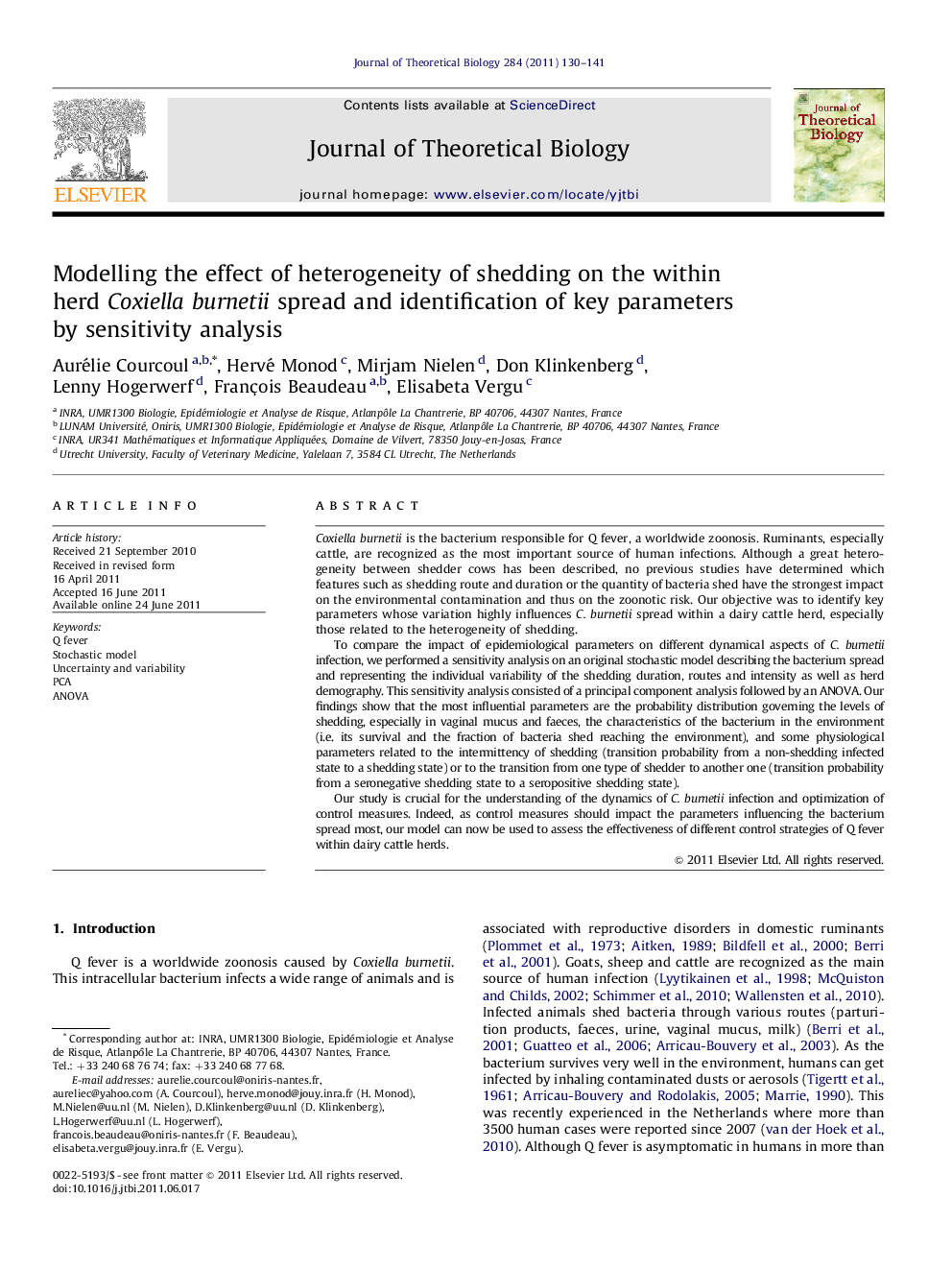| کد مقاله | کد نشریه | سال انتشار | مقاله انگلیسی | نسخه تمام متن |
|---|---|---|---|---|
| 4496956 | 1318908 | 2011 | 12 صفحه PDF | دانلود رایگان |

Coxiella burnetii is the bacterium responsible for Q fever, a worldwide zoonosis. Ruminants, especially cattle, are recognized as the most important source of human infections. Although a great heterogeneity between shedder cows has been described, no previous studies have determined which features such as shedding route and duration or the quantity of bacteria shed have the strongest impact on the environmental contamination and thus on the zoonotic risk. Our objective was to identify key parameters whose variation highly influences C. burnetii spread within a dairy cattle herd, especially those related to the heterogeneity of shedding.To compare the impact of epidemiological parameters on different dynamical aspects of C. burnetii infection, we performed a sensitivity analysis on an original stochastic model describing the bacterium spread and representing the individual variability of the shedding duration, routes and intensity as well as herd demography. This sensitivity analysis consisted of a principal component analysis followed by an ANOVA. Our findings show that the most influential parameters are the probability distribution governing the levels of shedding, especially in vaginal mucus and faeces, the characteristics of the bacterium in the environment (i.e. its survival and the fraction of bacteria shed reaching the environment), and some physiological parameters related to the intermittency of shedding (transition probability from a non-shedding infected state to a shedding state) or to the transition from one type of shedder to another one (transition probability from a seronegative shedding state to a seropositive shedding state).Our study is crucial for the understanding of the dynamics of C. burnetii infection and optimization of control measures. Indeed, as control measures should impact the parameters influencing the bacterium spread most, our model can now be used to assess the effectiveness of different control strategies of Q fever within dairy cattle herds.
► We model Coxiella burnetii spread within a dairy cattle herd.
► We identify key parameters whose variation highly influences the infection dynamics.
► Shedding levels, mainly in mucus/faeces, are the most influential parameters.
► Characteristics of the bacterium in the environment have also a great impact.
Journal: Journal of Theoretical Biology - Volume 284, Issue 1, 7 September 2011, Pages 130–141